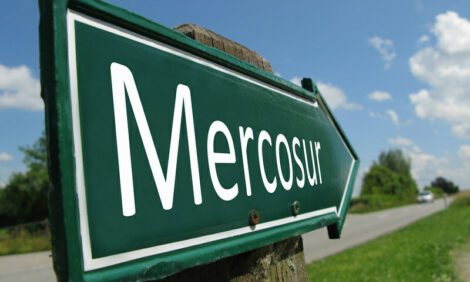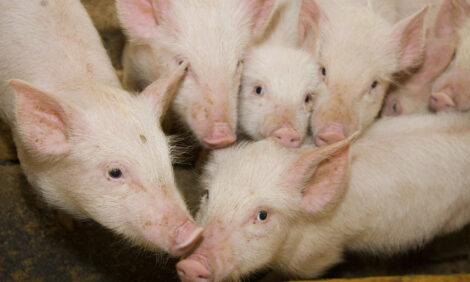



CME: Capital Needs Increase During Last Two Years
US - Pork producers, their suppliers and customers will gather in Des Moines this week for the annual World Pork Expo, hosted by the National Pork Producers Council, write Steve Meyer and Len Steiner.This
year’s attendees will almost certainly be happier about their chosen
line of work compared to the past two Expos when producers
were undergoing what turned out to be the worst two years in the
history of the US pork industry. Canada’s producers wish they
had only two years of losses since their version of Armageddon
began two years earlier than that of the US industry due to a
much stronger Canadian dollar.
How bad have the losses been? The graph below
provides the answer, we think. The idea for this chart came from
Dr John Lawrence at Iowa State several years ago. It is simply
the accumulated profits earned by ISU’s modeled average Iowa
farrow-to-finish operation if that farm sold one pig per month and
stashed the profits in a savings account.

The good years of the early 1990s pushed this proxy for
wealth or equity to record levels in 1997 before the price debacle
of 1998-99 pushed them below their January 1991 starting level.
That sever price downturn was caused by significant expansion
of US output AND contraction of US packing capacity.
Producers’ financial positions remained weak for the
next 4 years before beginning to improve in 2004 when a recordlong
period of profitability pushed debt levels to what was, in
many, many cases, record lows in September 2007. At that time,
corn and soybean meal prices exploded, driving producers into
the red and beginning a record-large and record-fast reduction in
accumulated profits/equity that finally ended in March when Iowa
farrow-to-finish producers earned an estimated $8.84 per head.
Export difficulties related to H1N1 influenza and larger-thanexpected
hog supplies and weights drove profits lower last summer
even as feed costs moderated somewhat.

To say the least, it has been a VERY’ difficult 2 years
that saw capital needs increase sharply as the cost of raising a
market hog went from about $100/head to $130-$150 per head
and, in some cases, even higher.
So where does this history of losses leave the US pork
industry? One answer would be “Smaller.“ The US herd is
7.6 per cent smaller than at its most recent peak in December 2007.
Canada’s herd has declined by 13.8 per cent over that same period to
put the combined Canada-US breeding herd at 7.064 millon head, 8.8 per cent lower than in December 2007-January 2008. Productivity increases
have offset a portion of that reduction but combined Canada-US pork production so far in 2010 is 3.6 per centsmaller than one year ago.
Another answer would be “Anxious.“ And that word applies to two different ways. First, producers are anxious (as in “worried“)
about several movements that may limit their options to make some key production decisions in the future. Proposed measures to limit animal
housing systems, limit or eliminate the use of antibiotics in feed and constrain the way hogs can be marketed/priced could all have huge
impacts on individual operations. The other form of anxiousness is concern about expansion. While neither sow nor gilt slaughter indicate
expansion is underway yet, higher profit potential and a number of EMPTY high-quality farrowing units both point to the possibility of a quick
turn to higher output. It appears producers and bankers are healing up at the moment but it may not take long to see higher hog numbers.









